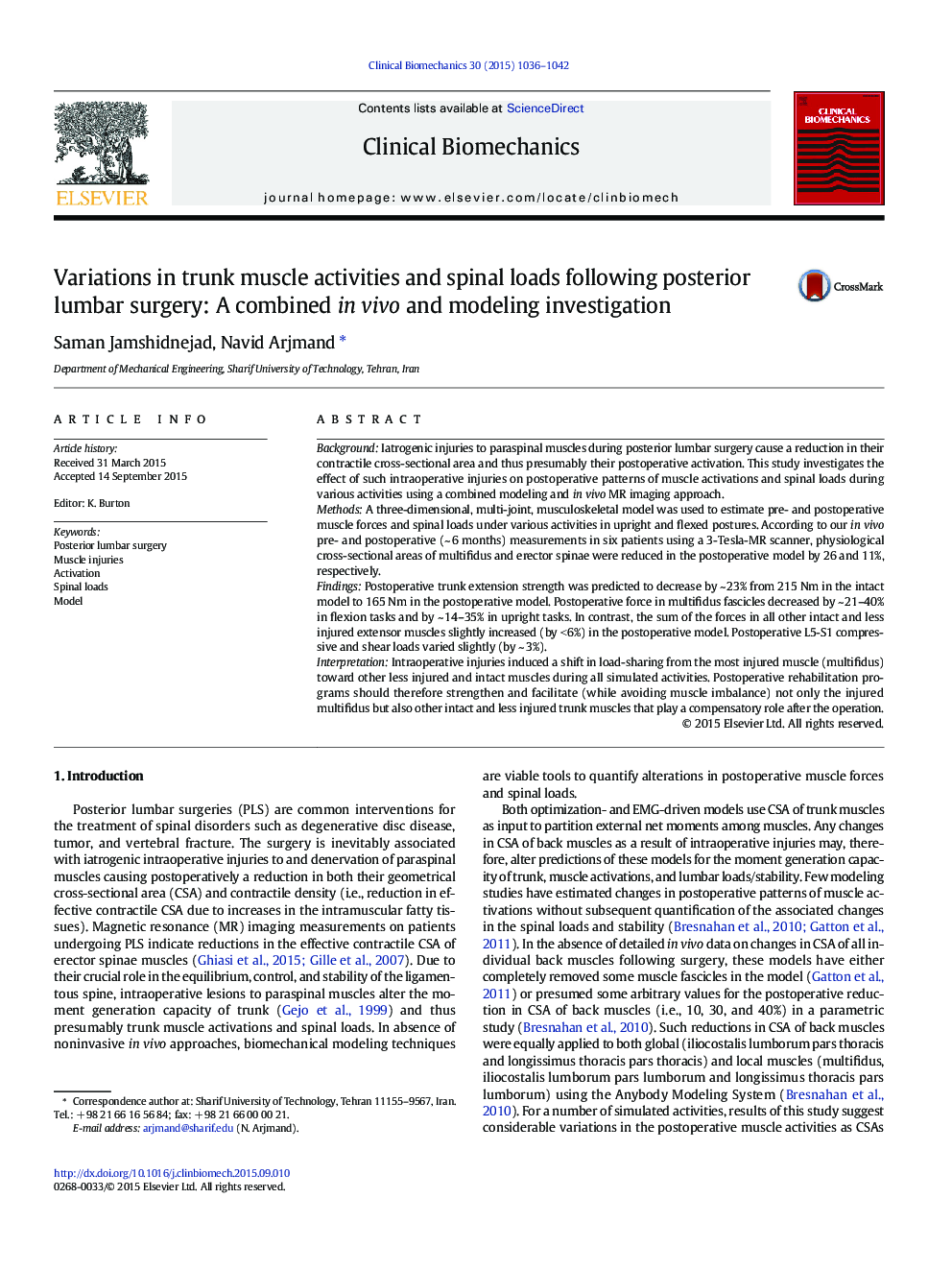| Article ID | Journal | Published Year | Pages | File Type |
|---|---|---|---|---|
| 4050067 | Clinical Biomechanics | 2015 | 7 Pages |
•Intraoperative injuries to back muscles cause a reduction in their cross-sectional areas.•A biomechanical model was used to simulate postoperative changes in muscle and spinal loads.•Based on our MR data, cross-sectional area of injured muscles was reduced in the postoperative model.•Intraoperative lesions were predicted to cause a shift in load-sharing from injured to intact muscles.•Both injured and intact muscles must be strengthened while avoiding muscle imbalance.
BackgroundIatrogenic injuries to paraspinal muscles during posterior lumbar surgery cause a reduction in their contractile cross-sectional area and thus presumably their postoperative activation. This study investigates the effect of such intraoperative injuries on postoperative patterns of muscle activations and spinal loads during various activities using a combined modeling and in vivo MR imaging approach.MethodsA three-dimensional, multi-joint, musculoskeletal model was used to estimate pre- and postoperative muscle forces and spinal loads under various activities in upright and flexed postures. According to our in vivo pre- and postoperative (~ 6 months) measurements in six patients using a 3-Tesla-MR scanner, physiological cross-sectional areas of multifidus and erector spinae were reduced in the postoperative model by 26 and 11%, respectively.FindingsPostoperative trunk extension strength was predicted to decrease by ~ 23% from 215 Nm in the intact model to 165 Nm in the postoperative model. Postoperative force in multifidus fascicles decreased by ~ 21–40% in flexion tasks and by ~ 14–35% in upright tasks. In contrast, the sum of the forces in all other intact and less injured extensor muscles slightly increased (by < 6%) in the postoperative model. Postoperative L5-S1 compressive and shear loads varied slightly (by ~ 3%).InterpretationIntraoperative injuries induced a shift in load-sharing from the most injured muscle (multifidus) toward other less injured and intact muscles during all simulated activities. Postoperative rehabilitation programs should therefore strengthen and facilitate (while avoiding muscle imbalance) not only the injured multifidus but also other intact and less injured trunk muscles that play a compensatory role after the operation.
